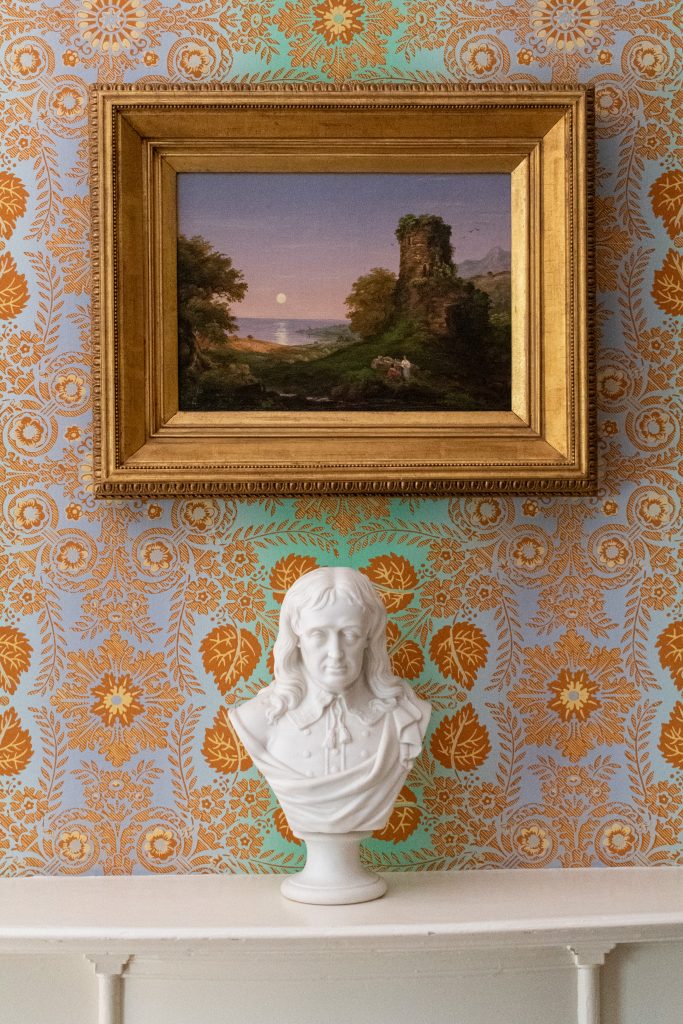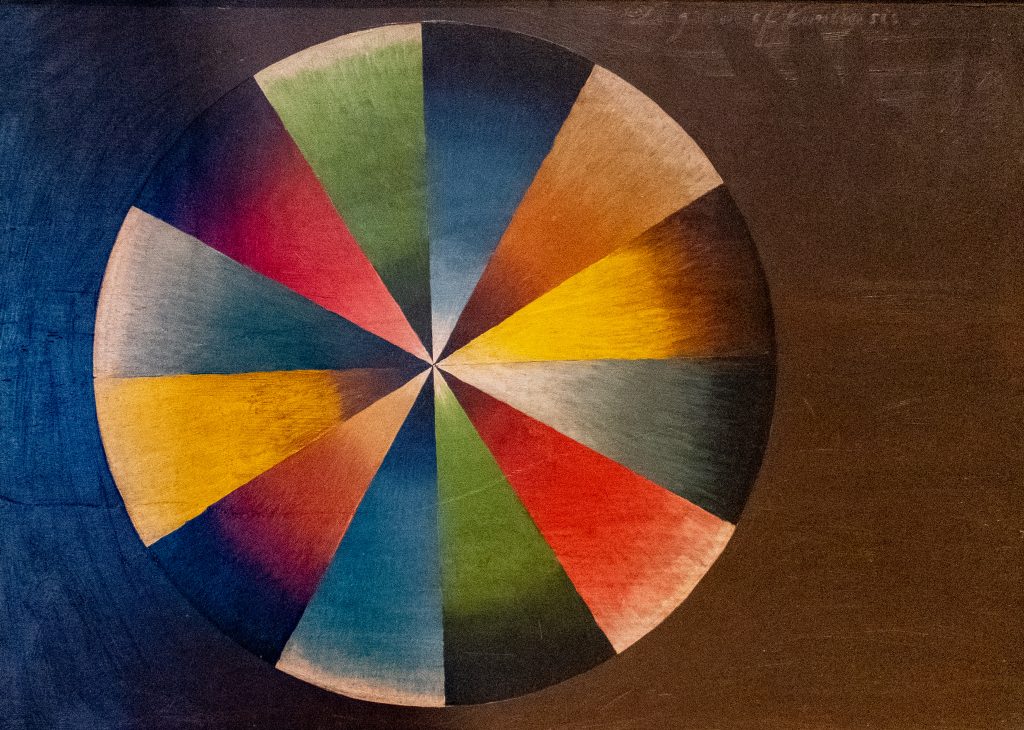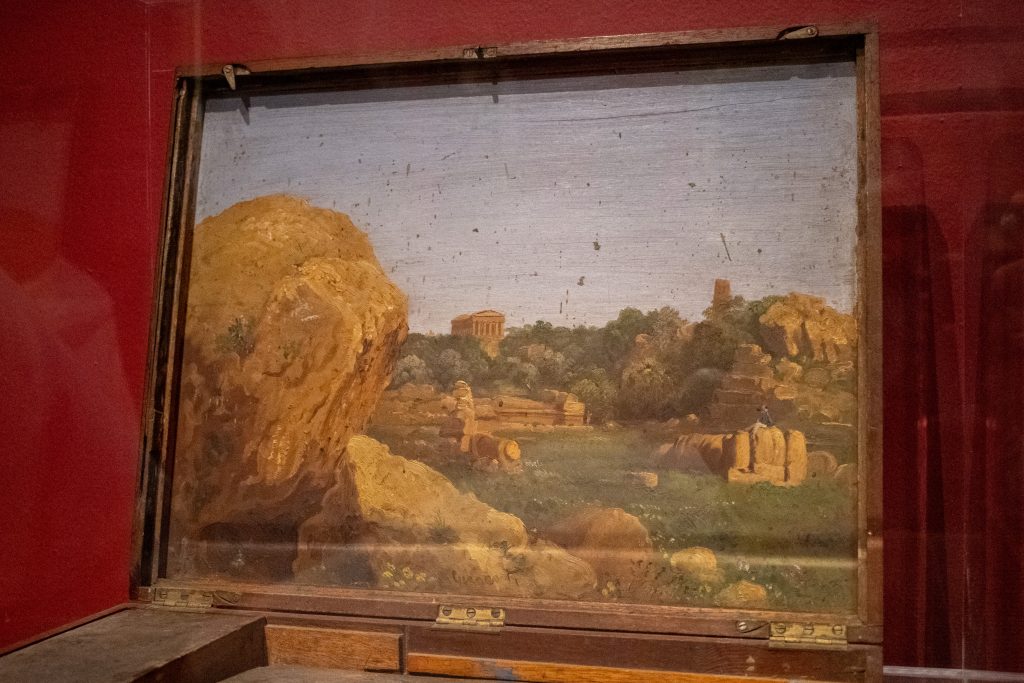Category: Thomas Cole
Next of Kin
On 12 May 2005, hurriedly and to the dismay of many art lovers, the New York Public Library sold Asher B. Durand’s famous 1849 painting Kindred Spirits in a closed-bid auction. It was bought by a Wal-Mart heiress, who’s taking it to a private museum in the Arkansas town where Wal-Mart has its headquarters. Earlier this week in the Wall Street Journal, Lee Rosenbaum reported new details of the library’s decision-making and called the sale “A Betrayal of Trust.”
At Sotheby’s on 30 November 2005, the library will sell off another chunk of its artistic patrimony. (HTML note: To browse through the catalogue online, you have to register with Sotheby’s, but registration is free.) In this batch, John Singleton Copley’s portrait of Mrs. Theodore Atkinson and her pet squirrel is the one I’ll miss the most.
By coincidence, a new article by H. Daniel Peck in the winter 2005 issue of American Literary History takes a close look at Durand, and Kindred Spirits in particular. (HTML note: The article isn’t freely available but most university libraries will have access to it.) Peck preserves a scholarly neutrality on the controversy surrounding the auction, but several details in his article bring home what New York has lost. He calls it “perhaps the most iconic of all American landscape paintings” and points out that it has graced the cover of the Norton Anthology of American Literature since 1979. Peck sees in the painting analogies to the “romantic empiricism” of Thoreau and an allegory of Durand’s own development as an artist, in particular, his relationship to the more celebrated painter Thomas Cole. Peck suggests that in Kindred Spirits the poet William Cullen Bryant is a surrogate for Durand:
In this picture, Cole takes a tutorial stance toward the other figure [Bryant], looking down at him from an elevated portion of the promontory and pointing out the lessons he has learned from the Book of Nature. The other figure, however, may or may not be listening. He’s not returning Cole’s instructive gaze but instead looking across the stream at a Durand-like rock formation, from which he may have learned very different lessons (p. 703).
Peck’s endnotes remind one that the New York Public Library holds Durand’s manucript papers—another reason the painting belonged at that institution. They also reveal that in 2007 the Brooklyn Museum of Art will mount the first major exhibition of Durand’s work in recent memory. Indeed, some of the most intriguing observations in Peck’s article are those relating Kindred Spirits to earlier sketches by Durand, in oil and graphite, several of which he reproduces. New York has lost Kindred Spirits just as Durand is finally coming into his own. The 2007 Brooklyn exhibit will be bittersweet.
Losing Kindred Spirits
I’m very happy that Thomas Bender has registered a protest against the imminent loss of Asher B. Durand’s painting Kindred Spirits. Before the painting vanished, I hadn’t realized how much I would miss it. Kindred Spirits used to hang in a gallery on the third floor of the New York Public Library, to the right of the door to the permissions office. Every time I visited to apply for access to a scholars’ reading room or to get clearance to read manuscripts, I saw it. It was an oddly casual relationship to have to such a great work of art—one of the city’s unexpected boons. I have probably seen it once every two or three months for the past five years.
In the painting, the poet William Cullen Bryant and the painter Thomas Cole are standing on a rock that juts out from a lush New York forest. One man is holding his hat, his head bowed as if reverentially, while the other points to the vista behind them—to the natural world that both admired. Bryant probably would have thought it appropriate that I enjoyed his portrait while on errands. He wrote his poetry in stolen hours, and he thought of it as a fugitive pleasure. “Ah! ’twere a lot too blest / Forever in thy colored shades to stray,” he wrote in the poem “Autumn Woods.” For ten years Bryant was a lawyer, and then for almost half a century he was the editor of the The Evening Post. The newspaper was no mere day job, however. As its editor, Bryant opposed slavery, advocated prison reform, called for better public schools, and campaigned for a city park. He was in many ways the conscience of New York. Perhaps because of his double career, to me the painting has always seemed to symbolize not just the friendship of two individuals, and not just the fellowship of poetry and painting, but the kinship felt by lovers of the beautiful from all walks of life. I’m not qualified to say whether the painting was important as a painting, but I feel confident that there’s no better emblem of early nineteenth-century America’s ideal of culture.
The painting of Bryant and his friend isn’t hanging beside the library permissions office any more. It was removed on Wednesday, April 13. By the time I visited on Friday, tax day, nineteen of the library’s paintings were gone, including another I was fond of, John Singleton Copley’s portrait of a lady with a squirrel. An editorial in the New York Times that morning described them as still on display, but they weren’t. For a while, though, a visitor could see the zigzag pattern of emptiness where they used to be, among the dozen or so minor portraits of antebellum worthies left behind and not yet re-arranged. Now even that’s effaced.
The trustees of the library have decided to sell its best and most famous paintings at auction. The New York Public Library has held art, books, and manuscripts since its inception, much as the New-York Historical Society did and still does. But the trustees of the library believe that its core mission today is to collect the written word and provide access to it. The library is not set up to exhibit art efficiently, they argue, and the income from the auction is needed for its endowment. I am sure they did not make the decision lightly. Durand’s painting alone is estimated to be worth $25 to $30 million, and I would not want to be the person forced to decide between keeping it and acquiring $30 million worth of books and manuscripts. Unless the library continues to collect the papers of twentieth- and twenty-first century writers, it will not remain the premier archive that it is, and unless it continues to acquire new books, it will not remain current as a research institution.
Nonetheless, this is a significant loss. Bryant himself may have respected economic realities, but it seems especially hard for the library to let this painting go. Bryant’s daughter gave the portrait to the library. Next-door, a park is named for Bryant and presided over by his statue. The library has many of Bryant’s manuscripts and much of his and his family’s correspondence. It has one of his family’s photo albums. It even has his wallet and all its contents at the moment of his death.
I wonder if the trustees have applied too rigorously the business principle of pruning down to the core. The library does, after all, mount half a dozen exhibits a year—last year’s show of James Gillray’s eighteenth-century engravings was mesmerizing—and hundreds of tourists stream through the building daily. And perhaps the trustees have defined too narrowly what that core is. A cultural institution owes something to its history, and it always means a little more than the services it provides. Must Kindred Spirits be privatized?




